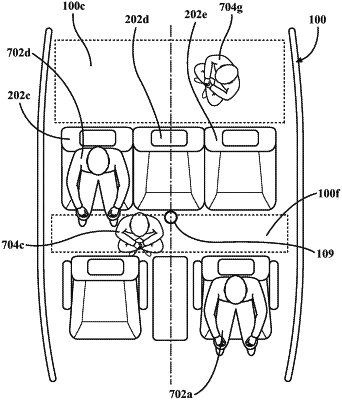| CPC B60W 50/12 (2013.01) [B60W 40/08 (2013.01); B60W 50/14 (2013.01); B60W 2050/143 (2013.01); B60W 2420/52 (2013.01); B60W 2540/049 (2020.02); B60W 2540/227 (2020.02)] | 20 Claims |

|
1. A system for controlling operation of a vehicle, the system comprising:
a millimeter-wave radar sensor;
a processor; and
a memory communicably coupled to the processor and storing a sensor control module including computer-readable instructions that when executed by the processor cause the processor to:
when the vehicle is stationary, and while one or more doors of the vehicle are open:
(a) automatically control operation of the radar sensor to perform at least one preliminary scan of a portion of an interior of the vehicle including the one or more open doors;
(b) determine, using information acquired by the at least one preliminary scan of the vehicle interior, a number of occupants currently in the vehicle; and
(c) repeat steps (a)-(b) until all doors of the vehicle are closed;
responsive to receiving a control command whose execution will result in movement of the vehicle, control operation of the radar sensor to perform a pre-movement scan of the vehicle interior;
determine, using information acquired by the pre-movement scan, if an excessive occupant condition exists in the vehicle interior; and
responsive to a determination that an excessive occupant condition exists, control an operation of the vehicle other than executing the control command.
|